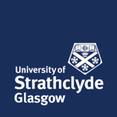|
Poor energy efficiency in dwellings makes them very difficult to heat. This accompanied by challenging weather conditions, especially in rural locations, can make fuel bills very expensive, resulting in fuel poverty.
As defined by The Scottish Fuel Poverty Statement, fuel poverty exists when more than 10% of the household’s income is spent on fuel to satisfy the heating requirements. To date, 35% of those living in rural parts of Scotland are likely to be living in fuel poverty as opposed to 30% in urban areas. Energy providers and fuel also tend to be more expensive, while income is relatively lower compared to the city. In addition, the types of fuels that are available in these rural communities lead to poor air quality as coal is used as a fuel source.
Fuel poverty is an area in which the Scottish Government is actively tackling. The main areas being addressed tackle the issues are: providing affordable access to a variety of different fuel types, improving housing and energy efficiency. |
